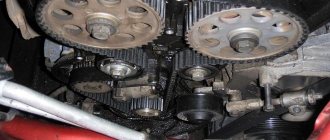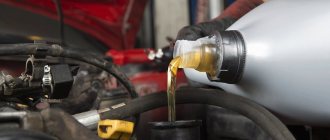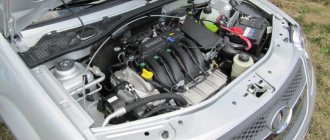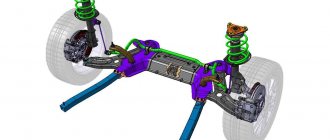The famous Korean car has long been in first place in sales in Russia. However, this is not surprising, because the car looks quite good in all respects. Among other things, the cost of this option forces almost every potential buyer to pay attention to the Korean manufacturer. So which is better, Lada Vesta or Kia Rio? Domestic Lada is not going to sit on the sidelines, and Vesta is ready to compete for the leadership palm with Rio.
Rio
In order to get first place, KIA decided to significantly improve its car, and not just visually change the style, but add it in almost every aspect. In less than six months, this car was purchased 82 thousand times! Just think about this number. However, despite such a high figure, she should not relax, because in terms of sales the Rio car is already beginning to catch up with the domestic Grant, and the beautiful Lada Vesta is hot on its tail.
As for one of the best versions of cars from the Volga company (Lada Vesta), it managed to sell 61 thousand times in ten months of last year. Moreover, this figure was exceeded by 20 thousand points compared to last year. As for increasing sales of Korean cars, things are somewhat worse here. The Koreans, compared to last year, managed to sell only 10 thousand more copies. Thanks to these figures, it becomes clear that it is quite possible that the domestic Vesta will soon be able to catch up with Rio in sales, and maybe even surpass it. However, you shouldn’t get ahead of yourself; time should judge everything. Now it is much more important to understand what capabilities each car has.
Exterior
It is impossible to identify a leader here. Both cars are designed with speed and style, but the way they implement this concept is different.
It's no secret that the KIA Rio and Hyundai Solaris are essentially twins, especially in technical terms. But if Hyundai is aimed at sedate buyers over the age of 30, then Rio was created with an eye on the youth audience. This determined its design, made in the style of “flowing lines”. A tiger-nose radiator grille, long and narrow headlights, an air intake with a chrome baffle and fog lights are what attract buyers.
It's hard to resist such a car!
The profile of the car is slightly inclined forward, there are spectacular stampings along the side panels, the chrome of the window opening adds ambiance, the roof is slightly tilted back, and the rear, with its large lights, is very harmonious. All this merges into a modern and fresh image that attracts young people so much.
Harmony in the image - it is not surprising that many choose Rio.
Lada Vesta, however, is in no way inferior. But in it, sophistication is replaced by aggressiveness. Classically shaped headlights, an air intake and a radiator grille, combined together with the curve of the chrome lines, create the image of a modern sedan. Moreover, this appearance will suit any buyer, regardless of age.
A powerful front end is Vesta’s trump card!
The profile is no less impressive. You just have to look at the X-shaped lines of the panels and the rims to immediately fall in love with this car. But the stern didn’t disappoint either – the straight lines of the lights look great against the background of the chrome-plated LADA letters.
But the profile of the Lada is no worse.
Appearance
It is worth noting that many people argue quite seriously about who Vesta borrowed the external design from. Some argue that these are completely domestic developments, while others insist that the design was borrowed from European analogues. Vesta herself does not pay any attention to these rumors, but only continues to win the hearts of domestic buyers. The image of the new Vesta was created by none other than the artist Steve Mattin, who until now has had a hand in creating famous German cars, and has also worked for the benefit of Volvo. Ultimately, he managed to create a truly original image of a domestic car. Without a doubt, not everyone likes these concave lines in the form of the letter X, but absolutely everyone will agree that it looks at least not boring.
Let's return to the Korean competitor. This car looks good, but extremely boring in comparison with the bright Vesta. In this case, the designers did not create something unimaginably beautiful and made a car that was quite average in all respects. The rear optics have been completely integrated into a single unit, and it looks just as cool as on BMW cars. However, this effect is spoiled by a rather simple radiator grille.
Without a doubt, you should not take all these words to heart, because in this case, everything depends on the preferences of each car enthusiast. Some will consider the Korean-made car to be the best urban model, and in their own way they will be right. Despite all this, the exterior design of Rio can be called decent, high-quality, interesting, but it cannot be called attractive.
Photos of the new item
Specifications
Engines
It is worth recognizing that KIA engines are noticeably better, and there are more of them. Rio offers the buyer a pair of 16-valve power units, and the 1.4-liter aspirated engine opens the line. Despite its small volume, its output is decent - at 6,300 rpm the engine develops 107 hp. s., with 135 Nm of torque at 5,000 rpm, providing the KIA Rio owner with acceleration in 11.5 seconds, and in total the sedan can reach 190 km/h (170 km/h with AT).
1.4-liter naturally aspirated KIA Rio.
His opponent is the 106-horsepower LADA Vesta engine. The difference in power is only 1 liter. s., almost the same acceleration speed to hundreds (11.8 sec.), as well as similar peak power and torque levels (5,800 and 4,200 rpm, respectively) provide both models with approximately the same character, quite sufficient for normal movement in the city and on track. But the declared consumption of Rio is noticeably less - in the city and on the highway it is 7.8 and 5.0 liters, versus 9.3 and 6.9 liters for the Russian model.
The 106-horsepower engine of the LADA Vesta is the main competitor of the Korean.
But the 1.6-liter engine of Rio and Vesta still have nothing to oppose. Korean engineers managed to achieve impressive success by removing 123 liters from the standard volume. With. power, while completely retaining the simple atmospheric design. This output is achieved at the same 6,300 rpm, but the thrust not only increased to 155 Nm, but its peak dropped to 4,200 rpm. This made it possible to keep the maximum speed at the same level and make the car noticeably more dynamic - changing hundreds takes only 10.3 seconds.
Kia Rio engine 1.6 liters.
At the moment, the Vesta engine has no alternative, but the X-Ray model is already equipped with a 122-horsepower, 1.8-liter unit, which should appear under the hood in the fall. With it, the Russian car will become much more dynamic, high-torque and will be able to compete on equal terms with Korean models. In addition, a French engine type HR16DE-H4M has been prepared for the car. Its power is 118 hp. pp., however, for the needs and conditions of the domestic market it was derated to 110 hp. With. AvtoVAZ also intends to equip Vesta with an 8-valve engine producing 87 hp. s., which will reduce the cost of the car.
Soon Kia Rio will have to compete with the 1.8-liter version of Vesta.
As you can see, the situation will change in the future - 122- and 110-horsepower engines will allow the LADA Vesta to be on par with the KIA Rio. And the low cost of the 87-horsepower version will affect sales volumes.
Transmissions
Each model has several gearboxes. Vesta has 2 mechanical transmissions, one of which was developed by domestic specialists (VAZ-2180), and the second was borrowed from the French (JH3 510). Both of them are 5-speed and equipped with multi-body synchronizers. The Russian box was taken from the Lada Priora model and subjected to extensive processing with extensive use of foreign components from Schaeffler.
The Schaeffler concern also joined the development of the Lada Vesta gearbox.
In addition, the secondary shaft was strengthened, etc. As a result, switching became an order of magnitude clearer, and the lever strokes were reduced, which made it possible to bring the VAZ-2180 type transmission to the same level as foreign ones. The French gearbox is also not bad - the shifts are clear, there are no problems with the long stroke of the lever either.
Manual transmission LADA Vesta.
KIA has a pair of gearboxes, but one of them is 5-speed, and the other is 6-speed. In general, the presence of 6 gears has a beneficial effect on the highway, as it reduces fuel consumption. On the other hand, the gears are short, which forces you to rev the engine too often in the city.
6-speed manual Kia Rio.
The automatic transmission of the LADA Vesta is represented by a 5-band robotic gearbox of the AMT type. It is cheaper to produce than an automatic transmission, which was one of the reasons for choosing this particular gearbox. But the cheapness is also felt in driving. Although in general there are no complaints about the robot, gear shifts are felt more clearly than in a classic automatic transmission.
The Lada Vesta robot is very good.
Rio offers 2 boxes at once - 4-band and 6-band, traditional “automatic”. The first transmission does not shine with novelty, but it is sufficient for city driving, although on the highway Vesta’s AMT outperforms it due to the larger number of steps. But the 6-band simply has no competitors. Clear shifts, acceptable economy, no jerks - with such a set of qualities it is simply impossible to lose.
And yet the new 6-speed automatic transmission of the Kia Rio is beyond competition!
Chassis
Structurally it is the same. LADA Vesta and KIA Rio have MacPherson struts at the front, and a torsion beam is mounted at the rear. It is not surprising that the handling of the cars is similar. On the other hand, the Russian sedan is distinguished by a higher energy-intensive suspension, which, coupled with high ground clearance, makes the ride more confident. At the same time, the car’s handling is also in perfect order.
Kia Rio suspension.
Rio also steers well, and in most cases it doesn’t come to the point of breakdowns. However, at speeds above 140 km/h, the stern begins to wobble, which forces the driver to constantly steer and tires him out during a long drive. But at 120 km/h the chassis seems just perfect.
The Lada Vesta stands well in a straight line and corners well.
What is the final result?
The domestic car model is capable of not only competing with its Korean counterpart on an equal footing, but in some cases even significantly surpassing it. It is worth considering that AvtoVAZ always listens to its consumers. For this reason, it is quite possible that in the near future those nuances that cause some dissatisfaction will be finalized. Before the sedan appeared on the country's automobile markets, it was redesigned more than twenty times.
Moreover, do not forget about the cost of cars. Vesta with a 122 horsepower unit will cost only 633 thousand rubles. For a Korean car assembled in St. Petersburg, you will need to fork out 767 thousand rubles. Whether it is worth giving that kind of money is definitely up to the buyers to decide.
Interior
But when you look inside the cars, you can see, if not outright plagiarism, then very similar motives in the interior design. It is noticeable that AvtoVAZ designers were impressed by the inner world of the Korean model.
Kia Rio interior.
The dashboard, center console, 3-spoke steering wheel are all pretty similar. Of course, one cannot deny Vesta’s interior originality and originality, but there are certainly similarities. On the other hand, both models are ok with ergonomics, and there are no complaints about visibility either. The finishing materials are of quite high quality, as for class B. But there is definitely more space in the Lada, thanks to the larger dimensions and longer wheelbase. Therefore, in this regard, we can put an equal sign, but with a slight advantage for the Lada Vesta.
But the interior of the Lada Vesta is no worse.
Body painting
Comparing cars should start with this parameter, because the protective coating ensures the stability of body parts during constant contact with the external environment and other aggressive factors. The thickness of the paint layer tells you whether the car's finish is good or not.
The Vesta modification of the SV Cross is slightly inferior to the Kia Rio in this indicator. The layer that the Lada has is from 120 to 135 micrometers, versus 138-174 for the Korean. Therefore, here the last one gets an extra point.
On the other hand, Vesta is doing well with her palette. The buyer of SV Cross can choose one of 10 shades, and soon there will be even more options.
The comparison here is lost to Rio - its manufacturer offers only 9 options. But the Koreans have brighter shades. There are, for example, bright orange and piercing blue. Lada is traditionally more conservative.
The quality of paint application is equal in both cases, and therefore Vesta Cross and Kia Rio look quite presentable. Even hard-to-reach and inconspicuous places are finished very carefully.
Kia Rio Warranties
Kia is increasing the warranty period for its car to 5 years or 150 thousand kilometers. Some parts are included in the list of those subject to natural wear and tear, and the decision on warranty replacement is made by specialists from Kia service centers. Such parts include filters, chrome design elements, hoses, pipes, windshield wiper blades, brake system parts and many others. Some can be replaced within 1-3 years after the start of operation, others can be repaired on a paid basis. The original battery must be replaced within six months from the date of purchase, after which the warranty period expires.
Price
Vesta and Kia have different configurations, which makes comparison much more difficult. The basic version of the Cross is equipped with a considerable number of good options, including:
- parking sensors;
- Cruise control;
- navigator;
- air conditioner;
- precipitation sensors;
- four airbags;
- rear-mounted video camera.
All this costs about 780 thousand rubles.
To get a Kia with approximately the same set, you will have to pay from 950,000 to a million. Interestingly, the Korean does not have cruise control at all, but there is such an option as a heated steering wheel. And yet, there are as many as six airbags.
Thus, by buying a Lada, you will get more goodies for a relatively modest amount.
Lada Vesta or Kia Rio: which is better to choose based on design
Comparing Rio and West by appearance does not allow us to identify a 100% winner. The design of both cars has a striking style. The design of the Kia Rio is all composed of flowing lines with elements of wild aggressiveness. Sharp lines of headlights, a radiator grille resembling the nose of a tiger, longitudinal stampings, and original wheels make the car swift, bright, and youthful.
Lada Vesta is not soft. Classic headlights, a wide air intake, a radiator grille, together with spectacular chrome parts add aggressiveness and originality to the car's style. Unlike its competitor, Vesta will appeal to any car enthusiast.
Regarding dimensions, 2180 is significantly ahead of its Korean competitor in length, height, and width. It is designed taking into account Russian roads and the preferences of local drivers. The trunk of the Vesta is somewhat inferior in volume. The Rio trunk holds 20 liters more volume.
The interior of the fret and cue is made taking into account European trends. It is comfortable for the driver, offers a wide viewing angle, and includes everything for a pleasant ride.
Chassis
Passability in our realities is at least an important criterion. Here, a parameter such as clearance height is of great importance. Kia cannot stand comparison in this position. The Lada has a gap of 20.3 centimeters versus 17 for the Korean. With such good potential, the domestic car can easily overcome uneven roads and drive onto the curb, which is useful when parking in urban conditions.
Vesta's suspension is also very powerful - it is capable of jumping through quite impressive potholes at speeds of up to 40 kilometers per hour, without causing any inconvenience to riders. At the same time, Kia rides softer, but it requires good roads.
The front suspensions of Vesta and Rio are the same. They are both MacPherson design. The rear ones are also identical - independent and have rotation beams.
The Russian model SV Cross is equipped in any configuration with disc brakes at the front and drums at the rear. There is nothing to put up against the Korean hatchback; their product has the same components in the basic equipment. However, the most expensive version of Kia has discs installed on both axles.
Adaptability to bad roads
On off-road terrain, the Lada Vesta SW Cross will give a Korean car a run for its money. According to the official specifications, the lowest point of its body is 203 mm from the ground, while the Kia's ground clearance is only 170 mm. This is even less than stated for regular Vests (178 mm), but by passenger standards the figure is not bad. Considering that Vesta’s wheelbase is only 35 mm longer than that of the Rio X-Line (2635 versus 2600 mm), from the point of view of geometric cross-country ability, Lada looks like a more correct option.
Vesta has ground clearance of 203 mm versus 170 mm for Rio. But the Kia is equipped with more practical high-profile tires.
Vesta has ground clearance of 203 mm versus 170 mm for Rio. But the Kia is equipped with more practical high-profile tires.
Price of body parts
Before buying a car, the decisive factor influencing the final choice is the price of body parts. Here the Lada Vesta becomes the undisputed leader. The cost of individual Rio parts exceeds the price of the same Vesta parts by 2-3 times. The difference is especially noticeable when replacing the trunk lid, bumpers and side mirrors. Thus, the trunk lid of a Russian car on average costs about 7,000 rubles on the market, while the purchase of a part for a Korean will require all of 14,000 rubles. The difference in the price of front bumpers is even more noticeable: from 3,000 rubles for a Vesta to about 10,000 rubles for a Kia Rio.
Comparison of configurations
For comparison, let’s take the “Comfort” package, which is most often purchased. The table below provides a comparison of systems and devices that are included or absent in Vesta and Rio IV with the Comfort package.
| Systems and functions | Lada Vesta | Kia Rio |
| On-board computer | Eat | Eat |
| Heated steering wheel | Eat | Eat |
| Adjustable steering wheel height and reach | Eat | Eat |
| The rear row of seats reclines in a 60/40 ratio | Eat | Eat |
| 12V sockets (front and rear) | Eat | Eat |
| Center armrest with box | Eat | Eat |
| Signaling | Eat | Eat |
| Immobilizer | Eat | Eat |
| ABS | Eat | Eat |
| ESC | Eat | Eat |
| Power windows | Front only | There is front and back |
| Wheel disks | Steel for 15" | Steel for 15" |
| Electronic communication ERA-GLONASS | Eat | Eat |
| TCS (traction control system) | Eat | No |
| Air conditioner | Eat | Eat |
| Heated seats | Yes (3 levels) | Eat |
| Locking the doors while driving | Eat | Eat |
Reviews about the trunk
The luggage compartment volume of the X-Line is 390 liters. But the Russian Cross station wagon surpasses it in trunk volume (480 l) and in functional equipment. Three grids plus a practical organizer in the trunk of the Vesta cross are very convenient. They securely secure cargo during transportation. Under the false floor (niche for the spare wheel) 95 liters of additional volume are hidden.
To transport large cargo, the rear seat can be folded, the total volume of free space will reach 825 liters. The double floor is divided into sections, each can be used separately.
Two wide handrails on the Lada Cross allow you to quickly close the trunk, while the Kia is equipped with only one handle.
Lada vesta guarantees
The warranty on the fret 2180 lasts 3 years or 100 thousand kilometers, it is valid subject to compliance with the operating rules and timely completion of technical and complaint inspections. The main components of the car have their own service life. For example, it is recommended to change batteries every 2 years; shock absorbers, bearings, catalytic converters - 1 year or no more than 35,000 km; rubber hoses, silent blocks, drive parts - up to 50 thousand km.
Corrosion, paint defects, malfunctions resulting from improper maintenance or self-repair are not covered by the warranty, as are damage caused during an accident.
Engine and gearbox features
Let's compare the engine and gearbox of two cars. The Korean car is equipped with gasoline engines (two power options to choose from - 123 and 100 hp). Cross engines have similar parameters (106 and 122 hp). Acceleration dynamics are 10-13 seconds. and 11-13 sec. accordingly (the range of values is due to the power unit).
The Rio hatchback from Korea optionally offers a six-speed automatic transmission. And the Russian Cross station wagon with automatic transmission is equipped with a robotic clutch. This robot, which was introduced in previous AVTOVAZ models, performed poorly in road conditions: the gas pedal does not respond immediately, and the automatic switches gears for quite a long time. Any maneuver on the highway requires experience and enormous concentration, as you need to adapt to the slowness of the transmission.
Thus, for those who love a dynamic, psychologically comfortable driving style, it is better to get a model with a manual transmission.
Gearbox - is it necessary to compare?
We are already accustomed to the fact that almost all Russian cars were and are produced with manual transmission. And just when we had already lost hope, a Lada Granta with an automatic transmission appeared. The box chosen was Japanese Jatco, which is basically reliable and proven. Then they began to install this box on Kalina. And it would seem that this box belongs in the Lada Vesta, but that was not the case. For some reason, the plant decided that an automatic transmission was not needed on Vesta and left the choice of an unnecessary robot and the 5-speed manual already known to us. The mechanics migrated here from Priora, but were significantly redesigned. It would be hard to say that the mechanics on the Vesta work poorly. Everything switches clearly and smoothly, but the mechanics are mechanics even in Africa. We have already written about the robot earlier. His reviews are quite contradictory. I had the opportunity to ride a robot a couple of times - on a Priora and a Vesta. Impressions are mixed. On the one hand, it is practically an automatic machine that does not require switching. On the other hand, the switching is not very clear and logical. Perhaps it's just a matter of habit.











